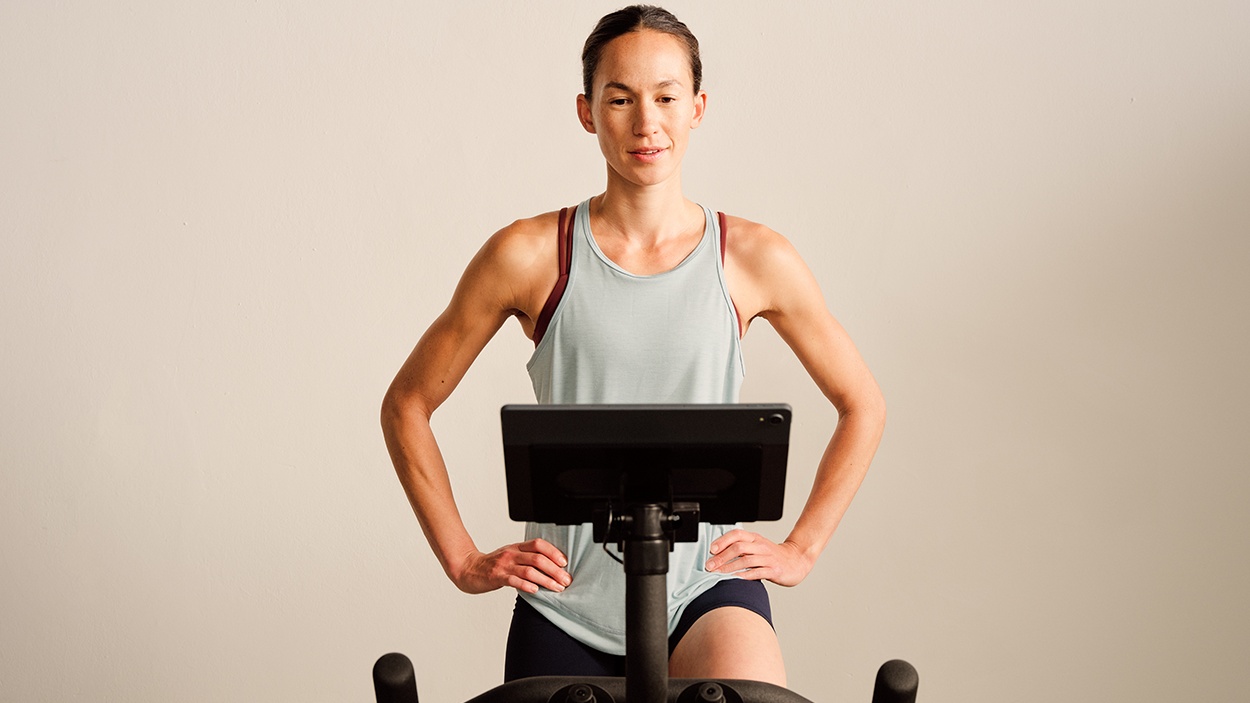Initially developed as a diabetes treatment, Ozempic keeps gaining popularity for inducing weight loss in short time frames. At the same time, this drug is not a silver bullet—patients are at risk of losing lean muscle mass and regaining weight after they stop taking medication. Regular exercise and a healthy diet are indispensable to mitigate these risks and maintain weight in the long term.
Can you use Ozempic to lose weight?
Ozempic is a commercial name for semaglutide which mimics the effect of hormone GLP-1 released after eating. It stimulates the release of insulin, slows down digestion, and suppresses appetite. This injectable medication is used to improve blood sugar control in adults with type 2 diabetes and to reduce the risk of certain cardiovascular diseases related to it (particularly, in blood vessels).
As an added effect, Ozempic helped patients struggling with obesity to achieve significant weight loss that was previously impossible with diet and exercise alone. According to some clinical trials, patients lost 15% of their body mass during 68 weeks of treatment. In 2021, a higher-dose version of Ozempic with the same active ingredient was approved specifically for weight loss under the brand name Wegovy.
Some doctors point out that both medications were designed to treat diabetes-related obesity for a continuous time, sometimes a lifetime. Patients may regain weight after discontinuing taking the medication. Moreover, neither Ozempic nor Wegovy were tested on average-weight people looking to lose weight, meaning side effects for them might be much stronger than expected.
Currently, to receive a prescription for Ozempic as a non-diabetic, you must meet one of the following 2 requirements:
- A body mass index (BMI) of at least 30
- A BMI of 27 and higher, plus cardiovascular risk factors related to your weight (such as heart disease or high blood pressure)
Both diabetes drugs can only be prescribed by a doctor. Please consult your doctor for more information.
What are the most common Ozempic side effects?
The most common side effects of Ozempic reported by patients include nausea, fatigue, and dehydration. Some patients experience abdominal pain and bowel problems such as constipation or diarrhea.
There is a risk of patients being malnourished because of suppressed appetite and vomiting. Ozempic lowers your blood sugar, the same as alcohol. Drinking alcohol during your Ozempic treatment may cause hypoglycemia (severe low blood sugar).
In rare cases, the medication may cause an increased risk of pancreatitis, an inflammation of the pancreas which releases insulin. Among other rare Ozempic side effects there are kidney problems, serious allergic reactions, and gallbladder disease.
Patients usually start with lower doses of weight loss drugs gradually building it up, to minimize potential risks.
Can you work out while using Ozempic?
Ozempic has shown to be effective both as a type 2 diabetes medication and as a weight management tool. At the same time, most doctors agree that it can’t replace first-line obesity treatments like diet and exercise.
A recent scientific article published in Obesity magazine emphasizes the importance of physical activity in the new era of anti obesity medications. Exercise remains important both in conjunction with and separately from weight loss for multiple reasons: improving cardiorespiratory fitness, muscle strength, and physical function.
Just like with any weight loss method, during Ozempic treatment, your body eventually settles at a weight loss plateau—a point beyond which it becomes almost impossible to lose more weight. Regular exercise can be an effective way of getting beyond this point by boosting your metabolism.
Exercise prevents one of the most common problems that occurs during the Ozempic intervention: the loss of lean muscle mass. Decreased muscle mass, in turn, decreases basic metabolic rate and complicates weight maintenance after stopping Ozempic. It also makes us feel tired and leads to a “skinny fat” body composition.
In addition, physical activity needs to become a crucial part of the lifestyle for people with type 2 diabetes. This is an effective way of managing blood sugar levels in the long term which may even substitute medical treatment. For example, 8 weeks of performing REHIT workouts on CAROL Bike decreased the risk of developing type 2 diabetes by 62% which is similar to the effects of taking the medication Metformin.
It is recommended to include aerobic and strength workouts in your weekly routine while taking Ozempic.

CAROL Bike is scientifically proven to reduce your risk of type 2 diabetes by 62% - and blood pressure by 5%.
Ozempic and exercise create a synergy effect
Regular exercise and Ozempic may amplify each other’s effect leading to greater weight loss and better glycemic control in the long term.
Ozempic slows down digestion and sustains a slow energy release. It prevents you from having sugar spikes and hunger cravings during the training. Improved insulin sensitivity and satiety lead to a stable mood and energy levels which help your body achieve an optimal training performance.
At the same time, it takes some time for Ozempic to increase insulin levels. Exercise, in turn, immediately increases insulin sensitivity closing this window at the beginning of the treatment. Physical activity reduces inflammation and oxidative stress that disrupt insulin signaling and are elevated in type 2 diabetes. In the long term, exercise facilitates weight loss which is another significant factor of diabetes control.
Finally, some studies suggest that combining semaglutide with moderate-to-vigorous-intensity exercise may help to mitigate the increased heart rate caused by the medicine and improve cardiorespiratory fitness. This is particularly important for patients with cardiac issues and an increased risk of heart attack.
Exercise plan for patients taking Ozempic
A workout plan for patients on Ozempic needs to include a component of endurance training, resistance training, and flexibility training. When you’re building your training plan, it is strongly recommended to start with low-impact, low-intensity exercises and pay attention to any discomfort.
During the clinical trials of Ozempic, participants were assigned a -500 kcal/day diet and 150 minutes of physical activity per week. You can follow this gold standard by starting with 3×30-minute low-impact workouts and 1 hour of walking.
Zone 2 cycling workouts at the conversational pace are the best option for beginners. You can also do walking or gentle yoga. High-intensity strenuous activities like HIIT, REHIT, running, or strength training should be incorporated into your workout cautiously and gradually.
As you start your new workout routine, take extra precautions to avoid potentially severe symptoms. These include:
Drinking more water
Nausea, vomiting, and diarrhea are the most common side effects of Ozempic which can cause loss of fluids. Dehydration may lead to headaches and kidney disease. It is important that you increase your water intake before and after the training to prevent dehydration.
Monitor blood sugar levels carefully
Both Ozempic and physical activity lower your blood sugar which, in rare cases, may lead to hypoglycemia. Dizziness, fatigue, blurred vision, rapid heart rate, and headache may be symptoms of this condition. Severe hypoglycemia may result in the loss of consciousness. Monitor your blood sugar levels before and after each workout for the first few weeks. Always keep at hand products that quickly raise blood sugar or chewable glucose tablets.
Have proper meals before workouts
This medicine suppresses the appetite which so you may not get enough fuel to perform your workouts. At the same time, physical activity also suppresses hunger for at least a few hours. Combining that with Ozempic could cause malnutrition when your calorie intake doesn’t match your energy expenditure needs.
As a result of malnutrition, you may be at increased risk of injury during workouts and struggle with slower and incomplete recovery, more severe and longer-lasting muscle soreness, and other performance issues.
In addition to this, a radical reduction in daily calories causes serious health issues. Women who cut more than 300 calories per day can experience menstrual disturbances, amenorrhea, lower metabolism, higher cortisol, and lower hormone levels. Men who cut out more than 400 calories per day are more likely to have lower testosterone, lower metabolism, and greater muscle breakdown.
Ensure that you eat protein-rich meals and enough carbohydrates before each workout.
Gradually build up the intensity of your workouts
As your body adjusts to medication, you can start to slowly increase the training time and introduce HIIT workouts to avoid overexertion.
For any problems, don’t hesitate to contact your doctor
Ozempic dose and exercise plan are selected individually, based on your health conditions, fitness level, and excess weight. If you experience an allergic reaction, severe nausea, or constant pain, contact your doctor immediately to get an appropriate treatment for your symptoms.
Although Ozempic can be a game changer for many patients suffering from type 2 diabetes, a combination of the medicine with exercise is the most effective way of achieving weight loss goals and improving health indices. Physical activity and Ozempic create a synergy effect suppressing appetite, increasing insulin sensitivity, and boosting metabolism. If you are just getting started with your workout routine on Ozempic, choose low-impact workouts gradually increasing the intensity as your body adjusts to the medicine.


